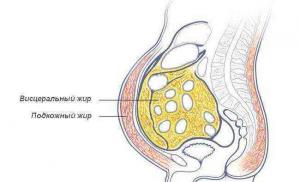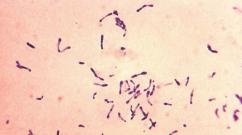The legend of the peacock butterfly. Beauty Butterfly (Daytime Peacock Eye)
Nature has many creatures amazing beauty and grace. One of them is a bright peacock butterfly. It is easy to distinguish it from other representatives of the order of Lepidoptera by its characteristic pattern. On the wings there are four blue eyes in a dark border. The insect lives throughout Eurasia, it is easy to find it in early spring in the garden or park. The butterfly feeds on plant nectar, giving preference to buddlee - a shrub with white or lilac fragrant flowers.
Description of the species
The beauty of butterflies invariably attracts the rapturous glances of fauna lovers. In the photo, one of the amazing creations of nature is the peacock butterfly. She is a typical inhabitant of household plots and forest glades. Prefers free, well-lit areas rich in flowering vegetation. In dense forests, it risks damaging its scaly wings on tree branches.
Insect taxonomy:
- family - Nymphalids;
- genus - Aglais (urticaria);
- species - Inachisio Daytime peacock eye.
The nymphalid family is characterized by a variegated wing color on the outside and patronizing on the inside. Many of its representatives are inclined to migrate in search of best places nutrition. The genus of urticaria is not numerous, it includes only 6-7 species, including the daytime peacock butterfly.
Information. History Latin name species associated with Greek mythology... Inachis is the name of the river god Inach, Io is his beautiful daughter.
The peacock eye is no different large size, the length of its front wings is 30 mm, the span is 60-62 mm. The wings are wide, the outer edge is serrated and angular projections. Their main background is reddish brown or red. A grayish brown stripe runs along the edges. In the upper part of the front and rear pair of wings, there is a characteristic pattern in the form of an eye with a blue center. It is surrounded by yellowish, white and black rings. In the description of the peacock butterfly, the protective coloration on the underside of the wings should be noted. Against a dark background, light brown winding lines create an imitation of a dry leaf.
Interesting fact. The color intensity is influenced by the temperature at which the pupa developed.
The head is rounded, sucking-type mouthparts, with a proboscis. Antennae are clavate. The eyes are complex, faceted, and resemble hemispheres in shape. The chest consists of three segments. The front legs are reduced. They are not used when walking; insects move on their middle and hind legs. In the middle of the fore tibia, there is a spur for cleaning the antennae. Sexual dimorphism is manifested in the structure of the antennae and size - females are slightly larger than males.
Track appearance
Butterflies are insects with complete transformation... Their developmental life cycle has a larval stage called a caterpillar. The appearance of the offspring is impressive, their length reaches 42 mm, and the body is covered with several rows of spines. The color of the caterpillars of the peacock butterfly is black, white dots are scattered all over the body. Branching spines protect each segment of the trunk. Walking legs are light.
Habitat
Butterflies are widespread throughout Europe, Asia and Japan. In the north, the distribution is limited to a latitude of 60 °. In Eastern Europe, it occurs in all countries, with the exception of areas far north... You will not find the peacock's eye on Crete and in northern Africa. Insects live wherever they are flowering plants: in forests, on forest edges and clearings, in ravines, on the banks of water bodies. In urban areas, they appear in parks, squares, gardens. Butterflies live in the mountains, climbing up to 2500 km above sea level.
Information. The largest concentration of peacock butterflies is in Germany.
Lifestyle
The main mode of movement of butterflies is flight. He can be active with wing flaps or passive - gliding. Sometimes insects make long flights in search of food. What does the peacock's eye butterfly eat? Like most Lepidoptera, it sucks the nectar from flowers. Among taste preferences insect:
- dandelions;
- marigold;
- elder;
- Clover;
- marjoram;
- buddleya.
Peacock eye refers to daytime butterflies that are active in daylight days. In middle latitudes, one generation is replaced per year, in the south, two generations have time to develop. The first generation of adults appears in June-July, the second in August-September. How long does a peacock butterfly live? Among insects, she is a long-liver - her life span is almost a year. The butterfly spends a significant part of the cycle in a state of suspended animation or hibernation.
Butterfly wintering
One of the notable features of the butterfly is its wintering in the imago state. With the onset of cold weather, representatives of the second generation are looking for reliable shelters for the cold season. They hide in the forest floor, under the bark of trees, in cracks outbuildings, to the attics. Having folded their wings, insects fall into suspended animation, their life processes slow down. In winter, butterflies are defenseless against the attack of predators, with insufficient accumulation nutrients they can starve to death. Dangerous premature rise in temperature. During the thaw, the peacock's eye wakes up and leaves the shelter. The second time it is more difficult for an insect to get a winter.
Defense mechanism
Butterflies have many natural enemies, including birds, rodents, reptiles, large insects... To scare the enemy off peacock eye an unusual color appeared. When birds attack, the butterfly sharply opens its wings. The appearance of wide-set eyes disorients the predator, and in some cases makes it retire. Even a small delay is enough for an insect to escape from the enemy.
Reproduction
Complex forms of courtship in the form of flights and mating dances are observed in butterflies. Males divide the territory into separate areas, where females are expected to fly. After wintering, butterflies appear in early spring, they give the first generation. The spread of pheromones contributes to the search for partners. After fertilization, the female lays 100 to 300 eggs on the back of the leaves of the forage plants. Most often it is nettles. Laying begins in early May. The embryo matures for one to two weeks, then the caterpillar appears.
Information. Young larvae live in large groups, on one nettle bush there can be up to 150 voracious individuals.
The caterpillars are equipped with a gnawing type of mouth apparatus, they feed day and night with short rest breaks. In the first instar, the length of the larvae is about 2 mm, in the second it is already 8 mm. They grow quickly, eating all the leaves on the plant. In addition to nettle, insects settle on raspberries, hops, willow or birch leaves. The number of days between molts is different; in total, caterpillars change five instars. The larval stage takes about a month. Before pupation, the caterpillars spread out in different directions.
The larvae have their own defense mechanisms... When attacked by predators, they take a threatening pose and begin to simultaneously move in different directions. This scares off the attacker. In addition, caterpillars secrete an unpleasant green liquid, can curl up into a ball and fall to the ground. An angular pupa of gray-green or brownish-gold color can be seen on walls, branches or stems. The color depends on the place chosen for pupation. This stage, depending on the ambient temperature, lasts 2-3 weeks.
Pupa length 25-28 mm, it is formed upside down. The rudiments of the wings, proboscis, and abdomen are discernible. The first generation of butterflies appears at the end of June. The cocoon breaks along the head and the anterior edge of the wings.
Related species of butterflies
Butterflies of the peacock-eyed family have a similar color of the wings with the pattern of the eyes. These are large insects with a wingspan of 12-15 cm. They are active in the dark. A distinctive feature of the family is a reduced oral apparatus. Insects do not feed in the adult stage. They live off the nutrients accumulated by the caterpillar.
Large night peacock eye
Peacock eye pear or saturnia is a butterfly common in southern and central Europe, the Caucasus and Asia Minor. Wingspan up to 155-160 mm, one wing - 55-70 mm. It is the largest moth in Russia and Europe. At dusk or mistaken for bats... Females are larger than males, they have short comb antennae, proboscis is underdeveloped. The main color of the wings is grayish-brown. At the base there is a black stripe, the edges of the anterior and posterior pair have a light edging. An ocellus with a dark center and a light ring is visible almost in the middle of each wing.
The summer time of the night peacock butterfly is May-June. it heat-loving species that does not tolerate frost. They can be found in northern Africa, Turkey, the Mediterranean, southern Europe, the Caucasus, Iran, and Syria. Their habitats are forests and parks with big amount bush. Females are inactive, males are much more active, they fly even during the day. But females live almost 3 times longer - 20 days against 8. The favorite forage tree of Saturnia caterpillars is a pear. But they are happy to eat on cherries, apples, plums, quince, almonds, maple. The caterpillar grows up to 10 cm, changes color several times during its life. A large peacock's eye gives one generation a year, a pupa leaves for the winter.
Attention. Peacock-eye pear is listed in the Red Book of Ukraine. In Russia it is guarded in the Voronezh, Rostov and Belgorod regions.
Small night peacock
The small peacock eye also belongs to the genus Saturnia. Unlike the large peacock's eye, it is found throughout the Palaearctic. Wingspan up to 60 mm. In the male, the front wings are reddish-gray, and the hind wings are orange. Females have a more modest light gray coloration. The pattern is represented by wavy lines and bands of dark brown and yellowish color. Each wing has a peephole - the middle is dark, the border is black and light.
Imagoes do not feed, they live for 3-4 weeks. Caterpillars live on thorns, raspberries, blackberries, willow, birch, heather. The larvae have to stock up on food for the pupa and butterfly. The insect hibernates at the pupal stage; summer begins in April-May.
How to care for a peacock butterfly
Some wildlife lovers bring insects home. Someone wants to watch the change of stages of their development or just have a particle of beauty at home. It is interesting to grow a butterfly from a caterpillar. She is placed in a container or jar and fed with leaves. When the time comes to pupate, you will need soil. An individual born into the world will take time to spread its wings. How to feed a peacock butterfly at home? The insect's diet includes flower nectar and fruit juice. In the warm season, you can bring fresh flowers picked from the site every day.
In winter, it will not be possible to provide the butterfly with nectar, and in a warm apartment it will not hibernate. Flower nectar is an excellent substitute for honey solution. A natural product is diluted with water in a ratio of 1:10. The insect is taken by the torso and placed on the edge of a saucer with syrup. The menu includes fresh fruits... Orange, ripe pear, the banana is cut into pieces and offered to the pet. You will need 1-2 feeds per day. The peacock's eye can be forcibly put into suspended animation. Would need Plastic container with ventilation holes. In such a house, the insect is taken out to the loggia, where it is dry and cool.
The average lifespan of a peacock butterfly is 3-6 months, with good care she will delight with her beauty for a long time. If you plant nettles on the site, then there is a real chance to meet fluttering butterflies every day.
The name of this butterfly sounds like nachisio, and such a combination of words from Latin is translated precisely as a peacock's eye. The insect belongs to the nymphalid family, where there are two types of these butterflies:
- daytime peacock eye;
- night peacock eye.
In addition, there are many differences in the characteristic parameters of these butterflies, which can have a minimum wing size of about 25 millimeters, and a maximum one that reaches up to 18 centimeters. Typically, average values are around 50 millimeters for males and 50-60 millimeters for females. At the same time, there are butterflies of a large peacock's eye, which are about 15 centimeters in size.
Characteristics
Compared with other butterflies, the peacock's eye has quite significant differences that even a person who is not particularly experienced in studying butterflies can see. In particular, the edges of the wings are ragged and uneven. Of course, a typical pattern should be noted, which is identical to the peacock's tail pattern, but can be in different color combinations:
- black;
- ginger;
- Red;
- gray-speckled;
- Gray;
- blue-blue.
Depending on the type, distinctive feature is activity during a certain period of the day. As it is not difficult to understand, the daytime peacock eye is active mainly during the day. You can probably guess when butterflies, which belong to the species of nocturnal peacock, are most active.
Habitat and other facts and details
Most often, such butterflies appear in Germany, although they do not disdain the rest of Europe and visit many other countries. In addition, the habitat for the peacock's eye is also Japanese islands and the Eurasian subtropics. There are a lot of options to see these butterflies:- meadows;
- steppe;
- wastelands;
- forest edges;
- gardens;
- ravines;
- parks;
- the mountains.
From interesting feature noteworthy is the love of peacock eyes for nettles. Often, butterflies are observed in the thickets of this plant.
The butterfly is active mostly in the warm season, although if it comes about the subtropical zone, then there it can operate during the winter thaw. In other regions, the peacock's eye is observed in open spaces from spring to autumn. When frost sets in, the butterfly looks for various hiding places, such as tree bark and various crevices, where it peacefully falls asleep, plunging into the so-called imago phase.
The nature and lifestyle of the butterfly
If we talk about the type of daytime peacock's eyes, then these butterflies are active only during the day and most often fly in thickets of nettles. In the spring, migration is carried out, which depends on weather conditions... If the weather permits, then the tribes of butterflies perform a movement, which allows you to get a new, more favorable habitat and, accordingly, best opportunities for breeding.

Besides, different generations and butterfly tribes can choose their own period of flights to other regions. For example, some fly in June, while others prefer September.
As mentioned earlier, butterflies seek shelter in winter. This can be a haystack or tree bark, sometimes the roof of a house. One way or another, the main signs here are coolness and dampness.
Coolness isn't just a butterfly's whim. Low temperatures are needed in order to slow down the processes in the body and thus allow to spend the winter in a kind of suspended animation. If the temperature suddenly rises in winter period, where the butterfly lives, there is a risk of death.
Butterfly food
Caterpillars of this butterfly also live in nettles and eat nettles. Although the caterpillar can use other plants as well:
- hemp,
- raspberries,
- hop.
These butterflies are quite consistent and solid and, if they choose a plant, they eat it completely.
The diet of an adult butterfly is:
- burdock;
- plant juice;
- thyme;
- nectar of garden flowers.
For the most part, nectar is preferred, but only the daytime peacock's eye has this preference. The night peacock eye is an ascetic butterfly, since it does not eat at all, and at the stage of the butterfly uses only those reserves that are made at the stage of the caterpillar. This is actually not much of a surprise, since the period of existence in the butterfly stage is quite short, about 12 weeks. Therefore, the reserves made by the caterpillar may well be sufficient for normal functioning.
Reproduction and life expectancy
Reproduction is carried out by caterpillars and consists of a set of sequential stages.

- The butterfly comes out of hibernation and begins to lay eggs on back side leaf of dioecious or stinging nettle. This process takes place between April and May.
- Each generation is about 300 individuals.
- In May, caterpillars appear, which remain so for 16 weeks, that is, until autumn.
- Caterpillars live quite amicably, big family, but for the time being, in August there comes a period when you need to split up and go to weave your own cocoon. This is where the pupa stage will form.
- The pupa matures for two weeks in a cocoon, which the caterpillar pre-complements with a special protective color. The color is chosen based on the plant where the pupa hangs and can be green, brown or otherwise.
- The final stage is the butterfly, which is formed largely depending on the temperature and takes on one shape or another.
In conclusion, it should be noted the difference in the duration of existence depending on gender. Males emerge from hibernation in June and complete their terrestrial journey in August. Females appear closer to autumn and leave this world around October.
Video: peacock butterfly
Good afternoon, young readers and adult parents! If the school gave children homework- prepare a report on the life of insects, then you are here. Today we have collected material about one of the most beautiful butterflies living in Russia, pleasing our eyes every year when spring comes. Butterfly Peacock Eye - this is who the school message about the world of insects can be dedicated to.
Lesson plan:
What does the peacock have to do with it?

If you now say that you have never met this butterfly, then I assure you, you are mistaken! You must have seen this bright orange miracle swinging on the yellow flowers of the mother-and-stepmother. It is this beauty in the forefront, among other insects, that brings on its wings the approaching summer by leaps and bounds.
Remember that you often met this one? Oh sure! It is everywhere: in parks, and in gardens, and in the forest and in the vegetable garden. It's just that not everyone knows that it is called that. And where is the lush-tailed peacock here? Everything ingenious is simple.
Has anyone looked at a peacock feather? Its tip is crowned with a beautiful iridescent blue-red-yellow-orange-green spot called an eye.

So, our butterfly's wings were also decorated with spots, according to the description and appearance peacock-like. That's why they called her that.
Moreover, flies are not only orange shades. Cherry-red clothes with eyes look especially impressive.
Do you know that?! The science that studies the life of butterflies is called lepidopterology.
Slightly more fluttering details

Well, we already understood that this is a butterfly. And what does she look like and what does she eat?
Let's start with the fact that our beauty is a representative of arthropod insects from lepidoptera... The family to which she belongs is called the nymphalids.
In nature, there is a day peacock eye and a night peacock eye, which, by the way, already belongs to the family of peacock eyes. These species differ, of course, in their way of life and in their size.
It is not difficult to see a lover of the day, she feeds on nectar, collecting it from flowers during the daytime, and her caterpillar eats leaves and young shoots of all kinds of plants with pleasure.

The coloration of a diurnal butterfly is often influenced by cold and warmth, which affected the caterpillar until it became a pupa. More often it is red-brown and red-brown, four blue eyes flaunt on the wings.
The size of an insect is determined by its wingspan. In daytime it is about 55 millimeters for "boys" and about 60 millimeters for "girls".

It is not so easy to meet a night peacock's eye, as this butterfly is a lover of the dark. Its wingspan is 15 centimeters or more, so these insects are often confused with birds and bats.
How to feed such a giantess and where to get so much nectar? The most interesting thing is that the night watch does not need food. Everything that it has accumulated while growing in the state of a caterpillar serves as its food for a short life.
Do you know that?! There are about a thousand species of peacock eyes on the planet, among which there is a giant called "atlas". Its wingspan is 24 centimeters! Meet great miracle nature is possible by going on a trip to the Asian tropics and subtropics.
How much life is devoted to beauty and where to look for it?

By the way, do you know how long a butterfly lives? Alas, nature did not reward this beautiful miracle with longevity. On average, all butterflies live for about two days. There are, however, those that, after wintering, continue to delight the eye for up to 10 months. Our beauty belongs to such a few centenarians.
The generation of butterflies that appeared in the spring flies until autumn, then hibernates in the hollows and bark of trees, in the attics of houses or barns, in forest and steppe litters and comes to life again until mid-summer. Very often they are found in the middle of the window frames, where she went to bed for the winter. To our surprise, such a household comes to life with the onset of warmth and begins to master the apartment space.

As we have already noted, the daytime peacock's eye can be seen in almost all of Russia. The habitat of these butterflies is multifaceted - the whole territory of Eastern Europe, except for the regions of the far north and deserts. There are a lot of them in Germany, but on the island of Crete and the African north it is difficult to find it.
Bright flyers with eyes on their wings have chosen for themselves meadows and steppes, forest edges and a garden, ravines and park areas. Even in the mountains at a level of up to 2.5 kilometers, you can meet them.

Small night peacock eye - the hero of the Red Books of Moscow, Irkutsk and Chelyabinsk regions, and the big night one is listed in the Red Book of the Voronezh Territory.
Do you know that? Each butterfly makes up to 300 strokes of its wings in a minute and folds them in the form of a book when it is resting. But he never sleeps!
That's it for today. It's March outside, which means that orange beauties will soon bring the long-awaited summer on their wings with peacock eyes!
And I talked about how to make rainbow plasticine butterflies with my own hands.
Success in your studies!
There are incredibly beautiful species in the butterfly kingdom. They are always pleasant to look at. At such moments, the question does not leave my head - how does nature manage to create such fabulous masterpieces?
There are such unique specimens from which it is simply impossible to take your eyes off. It is to such chic and unique creations nature refers insect butterfly peacock eye. This creature is compelling proof that there is simply no limit to the boundaries of natural invention.
Features and habitat
This insanely beautiful has a wingspan of at least 65 mm. You can meet such beauty in moderate and subtropical zones... They are found in Eurasia and on the islands. The butterfly prefers meadow terrain, forest edges, steppes. You can notice peacock butterfly in orchards, city parks and ravines.
The color of this amazing insect is dominated by red-brown tones, with rich specks at the corners of the wings, very much like eyes. Peacock butterfly description, in particular, its colors and those spots on the wings very much resembles the description of the feather, hence the name of the insect.
The body of the insect is black with reddish tints. The females of these butterflies are usually somewhat larger than the males. In nature, there are two most common peacock butterfly species - day and night. Day butterfly was discussed above.

Peacock moth
What about the night butterfly big peacock? In the color of these two insects there are spots in the form of eyes on the peacock feather. Large peacock butterfly large sizes... Sometimes it is even confused with a bat or bird, especially at night.
Not only because of the colors and sizes, this one became known to people. Watching this creature researchers determined that this insect has a unique instinct, which is not characteristic of all butterflies.
Initially, this discovery was difficult to believe. But the assumptions were nevertheless confirmed in practice. It turns out that this butterfly smells the scent that the female's pupa gives off. This ability is inherent in several other species of butterflies, which is very rare.

This awesome is most commonly found in nettles. The time of the butterfly's activity starts from spring to mid-autumn. Butterflies love warmth. In the subtropics, they are awake and in winter time... In countries with more temperate climate they find another way out - they go into hibernation, turning into an imago.
Character and lifestyle
The peacock butterfly prefers to lead a daytime lifestyle. This migratory insect can make long flights, which are more dependent on the weather conditions of the territory in which the insects live.

In general, much depends on their habitat. For example, butterflies living in the northern territories manage to reproduce one generation per year. Those living further south can do it twice.
These insects are still abundant in nature. But they are becoming much smaller, so they, like many others, need human protection. So that the butterflies do not go to the endangered section special works no need.
It is enough just to leave untouched what was done by nature. This insect is very fond of burdock and nettle, which in environment is getting smaller and smaller.

There are 4 stages of development in the life cycle of these insects. An egg is laid initially. From it, a caterpillar is obtained, which eventually turns into a pupa, and then into a butterfly (imago).
Secluded and cool places are necessary for the wintering of adults. In a cool environment, wintering is easier for them. There were circumstances when a butterfly found a warm room for its winter refuge and died in such an environment from old age.
Why this happened was explained by the researchers. During hibernation in adults, all life processes slow down somewhat, especially this process works better in a cool place.

Caterpillar Butterfly Night Peacock Eye
In the warmth, the insect's metabolism does not stop involuntarily, it is as active as during wakefulness. A butterfly in a dream does not feel any of this. So it turns out that she either comes out of hibernation already old or never wakes up again.
Nutrition
The staple food of the adult peacock butterfly caterpillar is nettle. If there is no nettle, she can feed on ordinary hops, raspberries, willow leaves. For a butterfly, the most important and only food is plant nectar.
However, there are butterflies that are an exception to this. For example butterfly night peacock does not need food at all, they are inherent in the state of aphagia, in which living beings do not eat. The question - how can they exist and where they get energy for themselves arises from many curious people. In fact, everything is very simple.

Caterpillar butterfly peacock eats leaves
While still caterpillar butterfly peacock, she stubbornly saturates herself with all useful substances, hence the fame of her as a very voracious creature. Caterpillars are so addicted to their meal that they eat the plant completely. The choice of plant depends entirely on the insect's sense of touch.
Reproduction and life expectancy
As for the reproduction of this insect, everything in a butterfly happens in the same way as in its counterparts. Initially, its adult individual lays about 300 eggs. To do this, she attaches them to the bottom of the nettle leaves.

From late spring to late summer, this insect is in the stage of a caterpillar of black color with white dots. Caterpillars prefer to choose their place of residence next to each other. Their paths diverge only when they begin to weave a cocoon.
The pupa stage in insects takes about 14 days. It is green in color. After this time, extraordinary beauty butterfly. Peacock Butterfly Colors cannot be confused with any others.

They are gorgeous, unmatched and fabulously beautiful. Even looking at peacock butterfly photo the mood spontaneously rises. V real life everyone who sees this creature wants to create, dream and enjoy life.
Butterflies always delight with their grace and delicate beauty. These fluttering creatures have long been symbols of beauty and rebirth to a new life. They were associated with eternity, love and a happy destiny. For this reason, they often became heroes of legends and myths. One of the brightest representatives of this order of insects is the peacock butterfly. What this beautiful fluttering creature looks like and where it lives, we will describe in the article.
Day peacock eye description and photo
Among the many insects, butterflies are the most bright representatives that people do not get tired of admiring. Peacock butterfly immediately attracts attention huge eyes... These are 4 bright large spots on the wings of an insect, which are very similar to spots on peacock tail, for which the winged insect got its name. Spots are not only a decoration for an insect, they serve as a means of protection from enemies. When a bird approaches it, the butterfly flaps its bright wings and the bird flies away in fright.
The peacock butterfly is a diurnal species of the Nymphalidae family. Butterflies belong to the arthropod insects of the order Lepidoptera... The color of their wings is red-brown with black and red edging along the edge. In the four corners of the wings there are large blue-blue eyes-spots. A shade of black and gray is clearly visible under the wings. The photo clearly shows that the butterfly simple form wings with shallow cutouts along the edges. The body is black and only in the upper part can you see a reddish tint.
Females are larger in size, they have a fragile wingspan of 5–6 cm. In males, it is slightly smaller and can reach only 4.5–5.5 cm. The color intensity of butterflies always depends on the air temperature at the time of pupation.
Habitat and favorable environment
These bright and beautiful creatures are typical inhabitants of Eurasia. They are found from the territory of Spain to the borders of Japan... Most of them live in Germany and in this country in 2009 the peacock butterfly was recognized as the butterfly of the year. The most favorable habitat for these creatures is open space. They feel most comfortable when they flutter on the territory:

They can often be seen in parks, squares and gardens. For a normal existence and development they need life-giving moisture and space. A locality such as a desert or dense forests it is not suitable for them, and also because of the cold climate they cannot live in the polar tundra. They cannot be seen on the territory of the island of Crete and in the northern part of the African continent.
Life cycle
The peacock eye is a migratory insect that can travel great distances. In the highlands they can fly at altitudes up to 2,500 meters above sea level. These beautiful creatures are diurnal. In winter, they fly to areas with a damp and cool climate. Life cycle This type of butterfly consists of 4 stages:
- egg;
- Caterpillar;
- chrysalis;
- imago (butterfly).
In areas with a warm and hot climate, two generations of peacock butterflies appear during the entire warm period. In areas less hot, only one generation. At the very beginning of summer, gentle butterflies leave their pupae and begin to actively begin to flutter throughout the summer.
Adults spend the winter in secluded and cool places. Sometimes they can be in the state of pupae... A cool climate is considered a prerequisite for normal wintering. It happens that a butterfly chooses for wintering warm place indoors, and in this case, she runs the risk of not living until spring, as she may die. In winter, during hibernation, a warm climate will promote a more active metabolism and this will accelerate the aging of the insect.
Peacock eye




Nutrition and reproduction
There are two main phases in the life of a butterfly - a caterpillar and an adult insect. Vegetable food serves as food for an adult caterpillar:
- hop;
- raspberries;
- nettle;
- willow leaves.
 When she goes through the chrysalis phase and goes into the state of an adult insect, she begins to eat only one nectar. The daytime peacock's eye has close relative- night peacock eye. These butterflies, reaching adulthood, live in a state of aphagia and do not feed at all. Even in the state of a caterpillar, they accumulate the necessary supply of food for which they are considered very voracious insects.
When she goes through the chrysalis phase and goes into the state of an adult insect, she begins to eat only one nectar. The daytime peacock's eye has close relative- night peacock eye. These butterflies, reaching adulthood, live in a state of aphagia and do not feed at all. Even in the state of a caterpillar, they accumulate the necessary supply of food for which they are considered very voracious insects.
When the female reaches adulthood, she lays eggs by attaching them to the bottom of the nettle leaves. Only one individual of the peacock's eye is able to lay up to 300 eggs at a time. In the period from May to August, the peacock's eye is in the state of a caterpillar. Its color is black with white dots. They always live close to each other. They part only during the weaving of the cocoon.
The peacock's eye stays in this phase for about two weeks and that's it. the body of the pupa is greenish... After a two-week stay in this phase, beautiful butterfly with beautiful long wings, which captivates with its bright and delicate beauty.
An interesting fact is that a voracious butterfly, eating plant food, does not harm plants... Such wonderful insects created only to admire them, obviously, therefore they cannot be pests.













